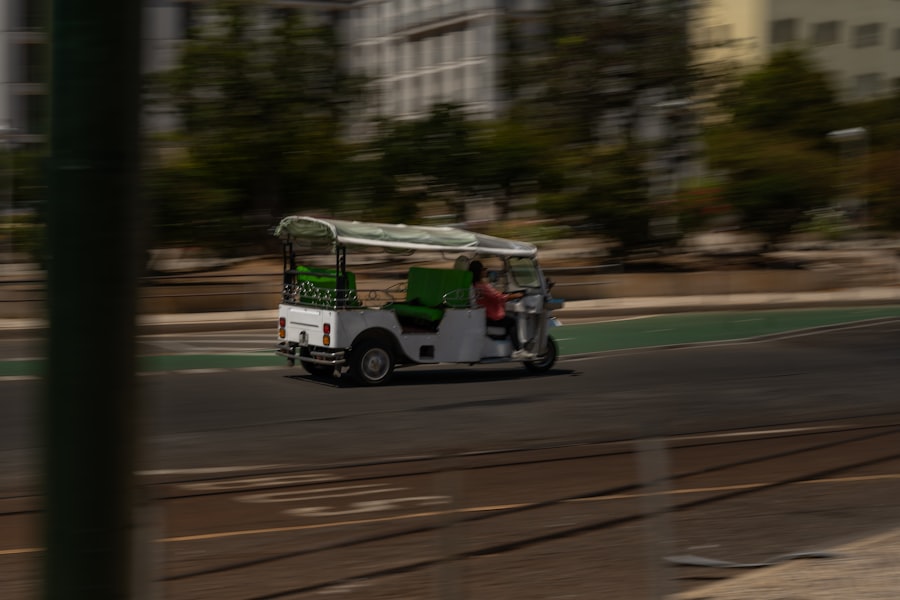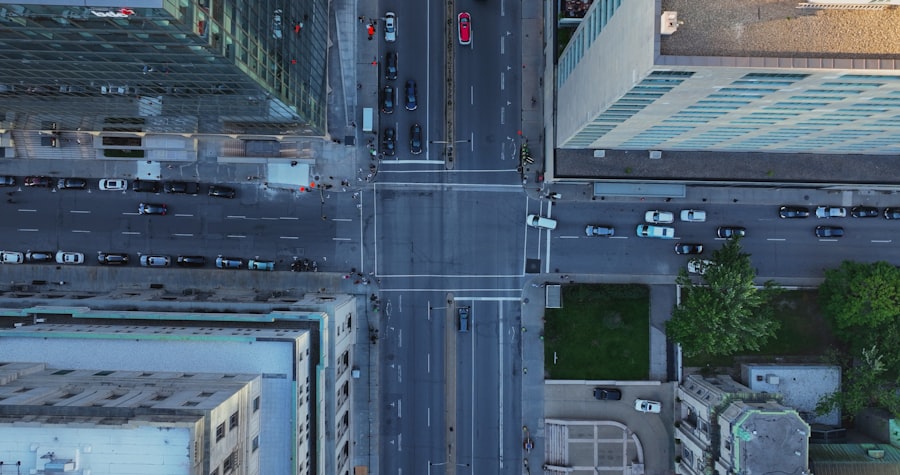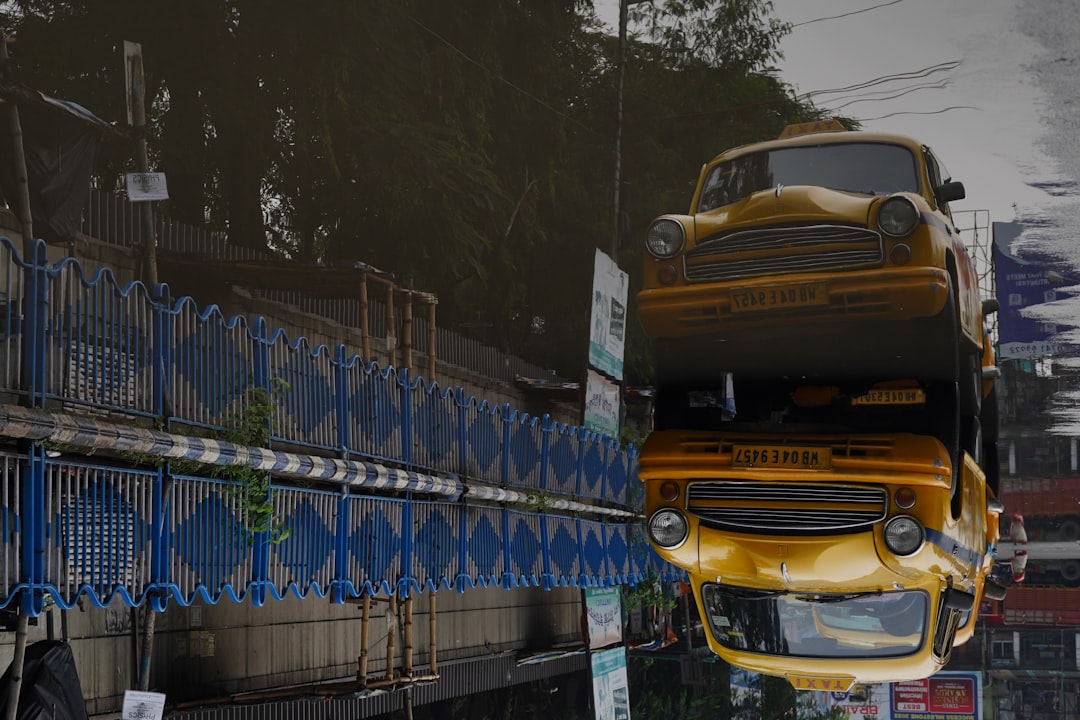New York City, often hailed as the bustling heart of the United States, faces an increasingly dire problem: gridlock. The streets, once a symbol of the city’s vibrancy, have become synonymous with frustration and delay. As the population continues to swell, the demand for road space has surged, leading to a situation where vehicles are often at a standstill.
The city’s infrastructure, designed for a different era, struggles to accommodate the modern influx of cars, trucks, and buses. This congestion not only affects daily commuters but also poses significant challenges for emergency services and delivery systems, creating a ripple effect that impacts the entire urban ecosystem. The causes of this gridlock are multifaceted.
A combination of factors, including an increase in population density, a rise in vehicle ownership, and inadequate public transportation options, has contributed to the worsening situation. As more people flock to the city for work and leisure, the streets become choked with traffic. Moreover, construction projects and road maintenance further exacerbate the problem, leading to bottlenecks that can last for hours.
The result is a city that is often gridlocked, where the promise of swift travel is overshadowed by the reality of prolonged delays.
Key Takeaways
- Gridlock in New York City is a growing problem that impacts commuters and the economy.
- Transportation delays have a significant impact on commuters, leading to stress and productivity loss.
- Public transportation plays a crucial role in alleviating gridlock and reducing traffic congestion.
- Ride-sharing services have contributed to increased traffic and congestion in the city.
- Infrastructure improvements are necessary to address gridlock and improve transportation in New York City.
The Impact of Transportation Delays on Commuters
Transportation delays in New York City have far-reaching consequences for commuters. For many, the daily commute is not just a matter of inconvenience; it can significantly affect their quality of life. Long hours spent in traffic can lead to increased stress levels, reduced productivity, and a general sense of frustration.
Commuters often find themselves sacrificing valuable time that could be spent with family or engaging in leisure activities. The psychological toll of these delays can be profound, contributing to a sense of dissatisfaction with urban living. Moreover, transportation delays can have economic implications for both individuals and businesses.
Employees who arrive late to work may face disciplinary actions or reduced pay, while businesses may suffer from decreased productivity due to employees’ inability to arrive on time. The cumulative effect of these delays can hinder economic growth and innovation within the city. As commuters grapple with the challenges posed by gridlock, it becomes increasingly clear that addressing transportation delays is essential for fostering a thriving urban environment.
The Role of Public Transportation in Alleviating Gridlock

Public transportation plays a crucial role in alleviating gridlock in New York City. The subway system, buses, and ferries provide millions of residents and visitors with alternatives to driving. By offering efficient and cost-effective means of travel, public transportation can significantly reduce the number of vehicles on the road.
The subway alone serves over five million riders daily, showcasing its potential to ease congestion and promote sustainable urban mobility. However, the effectiveness of public transportation in combating gridlock hinges on its reliability and accessibility. Many commuters rely on these systems to navigate the city efficiently; thus, any disruptions or delays can have a cascading effect on overall traffic patterns.
Investments in infrastructure improvements, such as upgrading aging subway lines and expanding bus rapid transit routes, are essential for enhancing the appeal of public transportation. By making these systems more reliable and user-friendly, New York City can encourage more residents to opt for public transit over personal vehicles.
The Rise of Ride-Sharing Services and Their Impact on Traffic
| City | Year | Number of Ride-Sharing Vehicles | Percentage of Traffic Impact |
|---|---|---|---|
| New York City | 2015 | 20,000 | 15% |
| San Francisco | 2016 | 10,000 | 10% |
| Los Angeles | 2017 | 25,000 | 20% |
In recent years, ride-sharing services like Uber and Lyft have transformed the transportation landscape in New York City. These platforms offer convenience and flexibility for users seeking quick rides without the hassle of parking or navigating public transit systems. However, their rise has also contributed to increased traffic congestion.
As more people opt for ride-sharing instead of traditional taxis or public transportation, the number of vehicles on the road has surged. The impact of ride-sharing services on traffic patterns is complex. While they provide an alternative to car ownership and can reduce the need for parking spaces, they also contribute to congestion during peak hours.
Studies have shown that ride-sharing vehicles often circle neighborhoods waiting for passengers or drop off riders in high-traffic areas, exacerbating gridlock rather than alleviating it. As New York City grapples with these challenges, it must consider how to integrate ride-sharing services into its broader transportation strategy while minimizing their negative effects on traffic flow.
The Need for Infrastructure Improvements to Address Gridlock
To effectively address gridlock in New York City, significant infrastructure improvements are necessary. The existing roadways and public transit systems require modernization to meet the demands of a growing population. Upgrading aging infrastructure not only enhances safety but also improves efficiency in transportation networks.
Investments in smart traffic management systems can optimize traffic flow by using real-time data to adjust signal timings and reduce bottlenecks.
Projects such as extending subway lines or adding dedicated bus lanes can provide commuters with more viable alternatives to driving.
By prioritizing infrastructure improvements that promote sustainable transportation options, New York City can create a more efficient and accessible urban environment that benefits all residents.
The Environmental Consequences of Transportation Gridlock

The environmental consequences of transportation gridlock are significant and far-reaching. As vehicles sit idling in traffic, they emit harmful pollutants that contribute to air quality degradation and climate change. The increased carbon footprint associated with prolonged congestion poses serious health risks for residents and exacerbates global warming trends.
In a city already grappling with environmental challenges, addressing gridlock is not just an urban planning issue; it is an environmental imperative. Moreover, the reliance on personal vehicles contributes to urban sprawl and habitat destruction as cities expand outward to accommodate growing populations. This phenomenon leads to increased energy consumption and resource depletion as infrastructure spreads further into natural areas.
By promoting public transportation and reducing reliance on cars through effective policies and infrastructure investments, New York City can mitigate these environmental impacts while fostering a more sustainable urban future.
The Economic Costs of Gridlock and Delays in New York City
The economic costs associated with gridlock and transportation delays in New York City are staggering. According to various studies, congestion costs the city billions of dollars annually in lost productivity and wasted fuel. Commuters spend countless hours stuck in traffic, which translates into lost wages and decreased economic output.
Businesses also feel the pinch as delivery times increase and employees struggle to arrive on time. Furthermore, the economic implications extend beyond individual commuters and businesses; they affect the city’s overall economic health. A congested transportation system can deter investment and tourism, as potential visitors may choose other destinations with more efficient transport options.
To foster economic growth and maintain its status as a global hub, New York City must prioritize strategies that address gridlock and enhance transportation efficiency.
The Role of City Planning in Addressing Transportation Issues
City planning plays a pivotal role in addressing transportation issues in New York City. Effective urban planning involves creating integrated transportation networks that prioritize accessibility and sustainability while accommodating growth. By considering land use patterns alongside transportation infrastructure development, planners can create environments that encourage walking, cycling, and public transit use.
Moreover, community engagement is essential in the planning process. Residents should have opportunities to voice their concerns and contribute ideas for improving transportation systems. By fostering collaboration between city officials, planners, and community members, New York City can develop comprehensive solutions that reflect the needs of its diverse population while addressing pressing transportation challenges.
The Impact of Congestion Pricing on Traffic in New York City
Congestion pricing has emerged as a potential solution to combat gridlock in New York City by charging drivers a fee to enter high-traffic areas during peak hours. This approach aims to discourage unnecessary vehicle trips while generating revenue that can be reinvested into public transportation improvements. Proponents argue that congestion pricing could significantly reduce traffic volumes in congested zones while promoting more sustainable modes of transport.
However, implementing congestion pricing is not without controversy. Critics raise concerns about its potential impact on low-income residents who may rely on cars for commuting or essential activities. To address these concerns, it is crucial for policymakers to develop equitable solutions that ensure all residents have access to affordable transportation options while still achieving the goals of reducing congestion and improving air quality.
The Future of Transportation in New York: Solutions and Innovations
The future of transportation in New York City hinges on innovative solutions that embrace technology and sustainability. Smart city initiatives that leverage data analytics can enhance traffic management systems by providing real-time information about congestion patterns and transit schedules. Additionally, investments in electric vehicle infrastructure can promote cleaner alternatives for those who choose to drive.
Furthermore, exploring alternative modes of transport such as cycling and walking can contribute to a more balanced urban mobility landscape. Expanding bike lanes and pedestrian-friendly spaces encourages residents to opt for healthier modes of transport while reducing reliance on cars. By embracing innovation and prioritizing sustainable practices, New York City can pave the way for a more efficient and environmentally friendly transportation future.
The Importance of Public Engagement in Addressing New York’s Transportation Crisis
Public engagement is vital in addressing New York City’s transportation crisis effectively. Residents possess valuable insights into their commuting experiences and can offer practical solutions based on their daily challenges. Engaging communities through forums, surveys, and workshops fosters collaboration between city officials and residents while ensuring that diverse perspectives are considered in decision-making processes.
Moreover, transparent communication about proposed changes or initiatives builds trust between city officials and residents.
By prioritizing public engagement as part of its strategy to tackle gridlock, New York City can create a more inclusive approach that reflects the needs and aspirations of its diverse population while working towards a more efficient urban transport network.
New York City’s transportation system has long been a topic of discussion, with its aging infrastructure and overcrowded public transit posing significant challenges. A related article that delves into these issues can be found on MyGeoQuest, which explores various aspects of urban transportation and potential solutions. For more insights, you can read the article by visiting this link. The article provides a comprehensive overview of the current state of New York’s transportation network and discusses innovative approaches to alleviate congestion and improve efficiency.
WATCH THIS! The Real Cost of NYC Living: Your Wallet, Sanity, and Subway Survival Skills
FAQs
What are the current transportation problems in New York?
Some of the current transportation problems in New York include overcrowded subways, delays and service disruptions, traffic congestion, and aging infrastructure.
What is causing the overcrowding in New York’s subways?
The overcrowding in New York’s subways is primarily caused by increasing ridership, limited capacity, and aging infrastructure that leads to frequent service disruptions and delays.
How does traffic congestion impact transportation in New York?
Traffic congestion in New York leads to longer commute times, increased air pollution, and decreased overall efficiency of the transportation system.
What is being done to address New York’s transportation problems?
Efforts to address New York’s transportation problems include infrastructure improvements, modernization of the subway system, expansion of public transportation options, and implementation of congestion pricing to reduce traffic.
How do transportation problems in New York impact residents and businesses?
Transportation problems in New York can lead to increased stress and frustration for residents, longer commute times, decreased productivity, and higher transportation costs for businesses.
